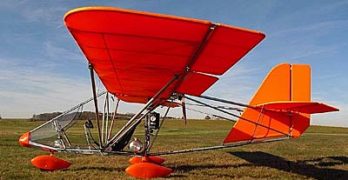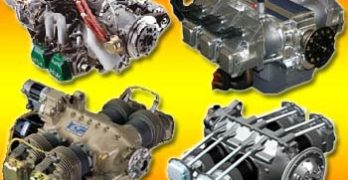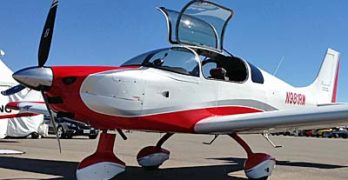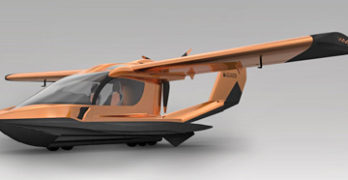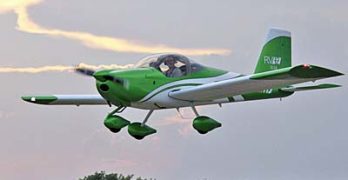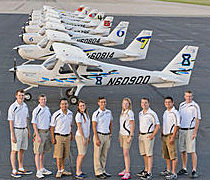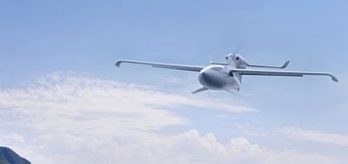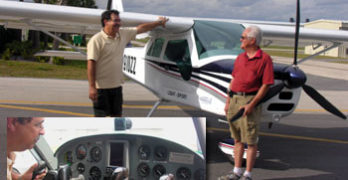Every year before the big shows, I often hear from journalist friends working for other publications. This year as other years, they need advance knowledge to get things started for print publications working on longer deadlines than those of us in the online publishing game. To help my fellow writers, I’ve been keeping a tally of what I expect at Sun ‘n Fun 2016. Here we go…! By the way, these are not order of importance or impact. Please don’t assume.
U-Fly-It, producer of the popular and agreeably-priced Aerolite 103 (ready-to-fly for well under $20,000) is well along in planning for a kit version. While running their facility at or near capacity, this move may help get airplanes to people faster plus allowing those who want features that will not qualify as a Part 103 ultralight to go Experimental Amateur Built.
Thinking of modestly priced aircraft, Quicksilver will be represented at Sun ‘n Fun at the Air-Tech space.
Search Results for : 915
Not finding exactly what you expected? Try our advanced search option.
Select a manufacturer to go straight to all our content about that manufacturer.
Select an aircraft model to go straight to all our content about that model.
Rotax Q&A and the Engine Manufacturer Debate
It was the ninth annual LAMA Dinner at Sebring 2016. Each year, the organization has tried to do something different and this year broke new ground.
In the past LAMA has brought in speakers such as AOPA then-president Craig Fuller, EAA then-president Rod Hightower, and FAA ex-administrator, Randy Babbitt. Except for the last, they were active in their roles when they spoke but this is evidence of how things change over a fairly short time. However, two things seem not to change.
America (or at least the mainstream media) continues an infatuation with electing a new leader. Every four years — though it seems more often as the election cycles increasingly jam together — the two big political parties trot out their new candidates. The other, more relevant (to readers of this website) unchanging fact is that pilots love to hear about and talk about the engines on their aircraft.
Flying Sling 4 … Airman’s Medical Update
As I’ve indicated many times in the last couple years, this website seeks to deliver news and video about Light-Sport Aircraft, light kit aircraft, ultralights, and light GA aircraft. The latter refers to four seat (and larger) aircraft created by the same companies that make LSA or kits. Specifically, I do not plan much on Cessna, Piper, Cirrus, Diamond, and other legacy brands as every magazine already examines these every month. Instead, I plan to cover emerging models from companies that established their brand in the LSA space: Tecnam, Flight Design, Pipistrel, Evektor, Van’s and The Airplane Factory. These six manufacturers are presently in the four seat game either with ready-to-fly aircraft or four seat kits. More are expected to follow.
At Copperstate 2015, I finally got a chance to fly the Sling 4 from The Airplane Factory, which I had been anticipating since enjoying the Sling LSA.
Continental’s Titan Engine to Power Vickers Wave
Big power is not just for LSA taildraggers anymore. A few years back, CubCrafters surprised the LSA world with its installation of the most powerful engine in the LSA space. The western U.S. company mounted a Titan engine from ECi making the modest Cub-like airframe perform far better than the old versions from the Piper company.
At the time, this potent powerplant raised eyebrows for two reasons.
First, it seemed an excess of power for the then-new lightweight class of airplanes FAA had just regulated into existence. Most had been using one of the 9-series engines from Rotax, which in some cases was itself a move up from a two-stroke Rotax 582 providing 65 horsepower. CubCrafters limited power after takeoff to maneuver within the regs, though, honestly, who would continue using so much power in cruise or while sight seeing?
Secondly, the Cub-style airframe is already near the upper LSA empty weight calculation so CubCrafters’ engineers had to add many costly carbon fiber elements to keep the empty weight low enough to fit in the class.
Day Two: LAMA Award and New Rotax Engine
Here is more news from AirVenture 2015, coming from Tuesday, Day Two.
The Light Aircraft Manufacturers Association gave a press conference to a full house. LAMA enjoyed a terrific opening day in its mission of advocacy for Light-Sport, light kit, and ultralight aircraft. Partnered with the U.S. Ultralight Association (USUA), LAMA participated in two very productive meetings, one with EAA’s advocacy experts and another with several key FAA personnel. USUA’s Roy Beisswenger and I hope for good things to follow but felt highly energized that we moved closer to some goals we believe can truly help the light aircraft industry and its pilots.
That was the “business” portion of LAMA’s press conference, but we kept it brief as we had a more meaningful message to deliver.
LAMA has presented its President’s Award for 24 years running to an outstanding individual whose work benefitted the light aircraft sector. Announcing this year’s recipient was one of those bittersweet moments.
Van’s Aircraft Authorizes US Aviation of Texas
Van’s Aircraft has been creating highly successful designs for decades; more than 8,750 RV kits have been completed and are flying. Over 20,000 kits have been sold, cementing this Oregon company as the most successful kit aircraft company in history. In the last couple years, Van’s has enlisted Synergy Air to fully build and deliver their RV-12 Light-Sport Entry. Before the ready-to-fly project began Van’s had delivered more than 250 kit versions; the fleet of both kit and factory built RV-12s keeps growing. When that happens, many buyers — especially those who elected to purchase a factory-built ’12 — need quality places to obtain services for their airplane. Recently a Texas aviation powerhouse, US Aviation and their US Sport Planes division, was approved as a Factory Authorized service center for the RV-12. Company executive Scott Severen, a longtime recreational aircraft enthusiast and businessman, has been very successful at securing similar approvals from many of the top LSA manufacturers.
Grand LSA News Wrap-Up… Pre-Oshkosh
CESSNA’S DISCOVER FLYING
I met new business leader for the Skycatcher LSA, Tracy Leopold, at Sun ‘n Fun 2012 where she confirmed the Wichita giant’s support for their lightest aircraft, now being assembled in Independence alongside other Cessna models. As summer began, Tracy’s Skycatcher group amped up their game with a program called Discover Flying Challenge. *** After hiring eight university graduate flight instructors — plus a ninth to act as dispatcher — the team took off in all directions and will reunite again at AirVenture 2012. Meanwhile, the youthful team is visiting Cessna Pilot Centers and non-CPC FBOs plus fly-ins and air shows all the while doing what college grads do these days: updating Facebook and Twitter feeds and blogging about their activities. *** “We wanted to do something different, something that would get the attention of the next generation of pilots while at the same time getting the Skycatcher in front of the public,” explained Tracy.
Three If By Sea
Some bright minds at LISA Airplanes, a French company, had a great idea to take the hydrofoil concept and apply it to an LSA seaplane. I’d often wondered why hydrofoils haven’t been done before, it’s such a great concept.Anyway, the airplane is the AKOYA. The technology for the entire package is patented and called Multi-Access, not the most sizzling name but what the hey, look at how cool those little moustache water wings look sticking out from the hull! *** Now get this: the company claims AKOYA operates as easily from land as from water…or snow! First, to those water wings sticking out: they’re called Seafoils, a trademarked name, which adds a little more marketing sizzle to this steak. *** They’re connected to a retractable gear that can be rigged with wheels or skis, I guess, and also to motor-driven, pivoting wings! There’s also a chute onboard. Very neat.
Mike Z Sport Aviation
Mike Z Sport Aviation
If you live in Central Florida and pursue
recreational aviation, odds are you know
or have heard of Mike Z. His last name
is Zidziunas and now you know why everyone
calls him “Mike Z.”
Mike is well known in the hang gliding community
and among ultralight enthusiasts. He
has wide experience, including sail repairs
(the same kind of work sometimes needed by
hang glider pilots), being an A&P mechanic
and LSA Repairman with plenty of knowledge
of aircraft repairs. More than being qualified
himself, Mike’s Plant City, Florida, airport
operation has been the host quarters for
one of Rainbow Aviation’s LSA Repairman
courses.
Many of the people who have come to know
Mike took flight lessons from him or had
maintenance done by him. Some LSA enthusiasts
know he assembles airplanes for
Sportsplanes.com, specifically models like the
Breezer II, the Skylark, the C-42, and others.
Mike has also worked closely with another
Central Florida legend, Jay Kurtz, a DAR who
attracted attention last year by gaining ELSA
approval for a Van’s RV-9 done as lightly as
possible so that it could qualify as a light
sport aircraft.
Brazilian LSA Invasion; new Paradise P-1
SEBRING 2008 UPDATE — OK, two hardly makes an invasion, but after 32 months, we had no Brazilian Special Light-Sport Aircraft; now we have two since Christmas. On January 10th, the American importer of Paradise P-1 won approval to become our newest SLSA model. Like nearly every player in the LSA industry, Paradise will display at Sebring, except this company calls Sebring home so they won’t even get airborne to attend. *** The metal P-1 is a beautifully finished, all-leather interior, spacious airplane in the Cessna 150 tradition…except P-1 offers much better performance to go with the larger cabin. Built of welded 4130 steel tube covered with aluminum, P-1 qualifies for a 1,650-pound gross in Brazil. At 42 inches wide and using panel mounted yokes, Paradise enjoys unhindered floor space with lots of legroom. More than 30 cubic feet of space in the aft cabin (enough for a golf bag) can hold 70 pounds of baggage.


